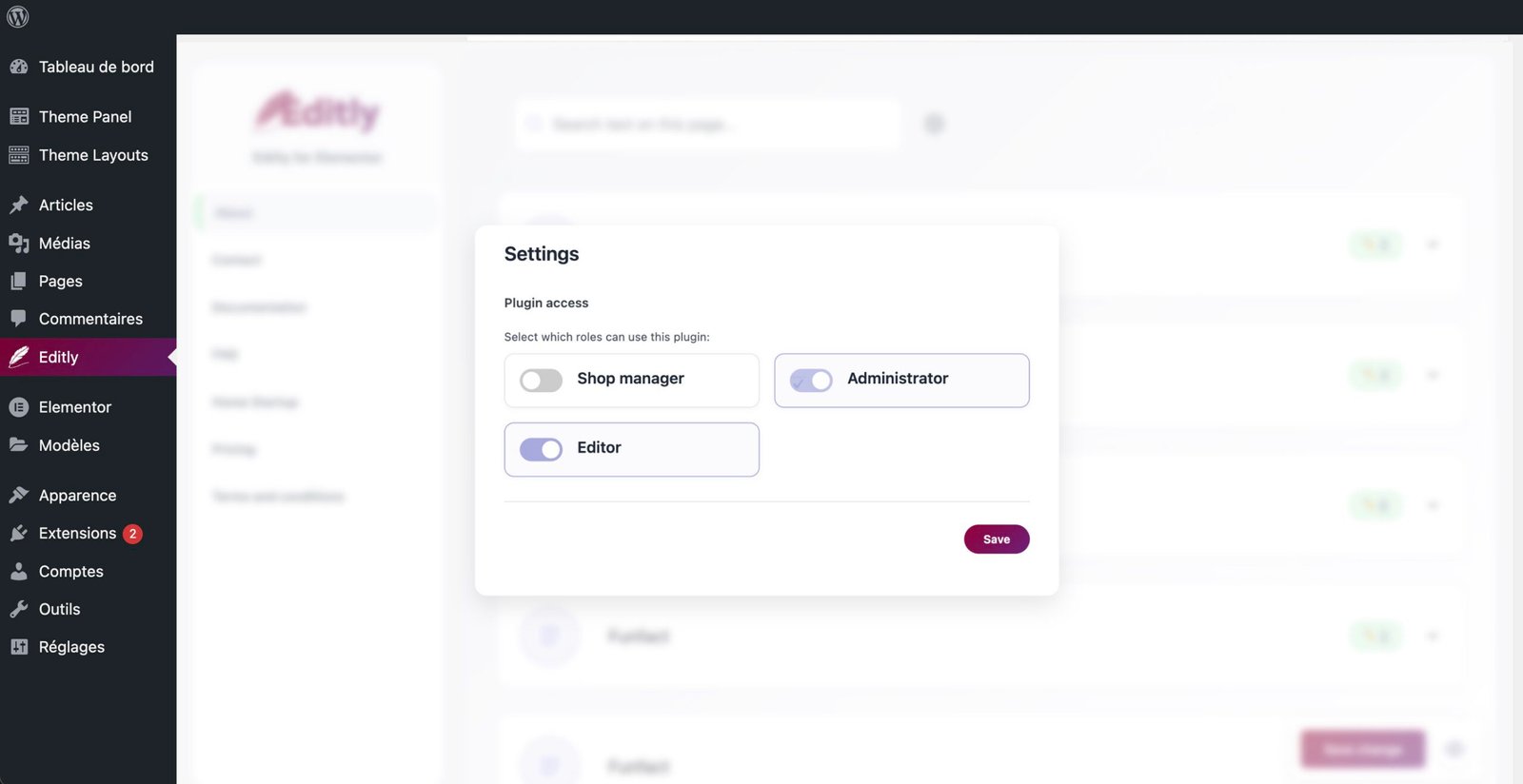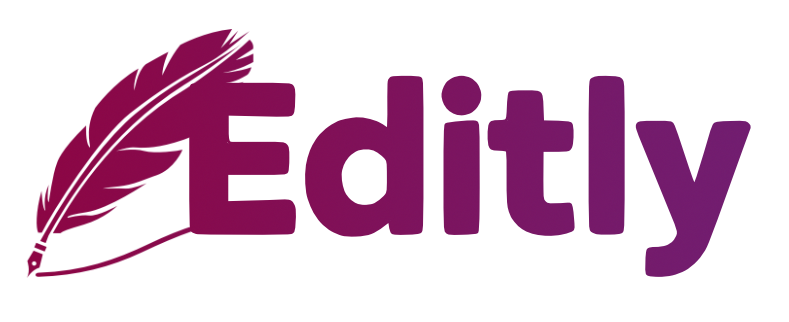Documentation
Comprehensive Editly documentation—step-by-step guides for installation, licensing, page selection, inline text editing, and role management.
Getting Started with Editly
Editly for Elementor is built for agencies and freelancers who manage dozens of client sites. Instead of logging in for every micro-change (new campaign headline, last-minute price tweak…), you hand clients a safe, ultra-simple interface so they can update copy themselves—no risk, no builder overload, no broken layout. Result: more autonomy for the client, fewer “quick fixes” in your inbox, and happier marketing & SEO teams who can keep content fresh in seconds.
Minimum Requirements
- WordPress ≥ 5.6
- PHP ≥ 7.4
- Elementor ≥ 3.0 (Free or Pro)
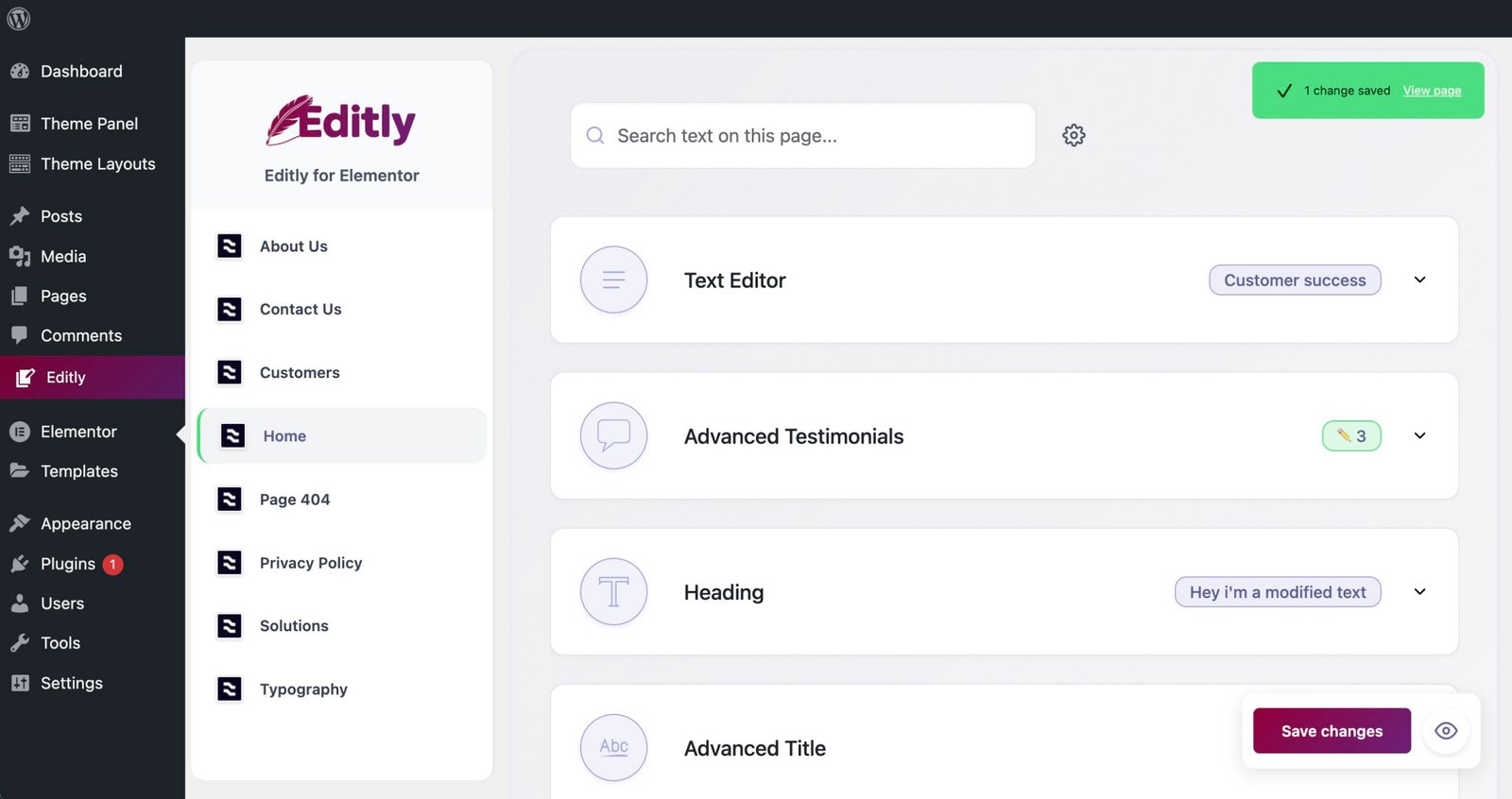
Installation
Set-up is a one-minute, one-file affair—no extra add-ons or CLI tools.
Step-by-Step
- Download the
.zipfrom your Freemius purchase e-mail. - WP-Admin ► Plugins ▸ Add New ▸ Upload Plugin.
- Select the file, click Install Now, then Activate.
- Editly immediately indexes every Elementor page; nothing else needed.

Licence & Account
Activate Your Licence
- After activation, the “Activate Editly” popup appears.
- Paste your licence key and click Activate.
- Freemius sends a quick e-mail—click the link to confirm ownership. Done ✔︎
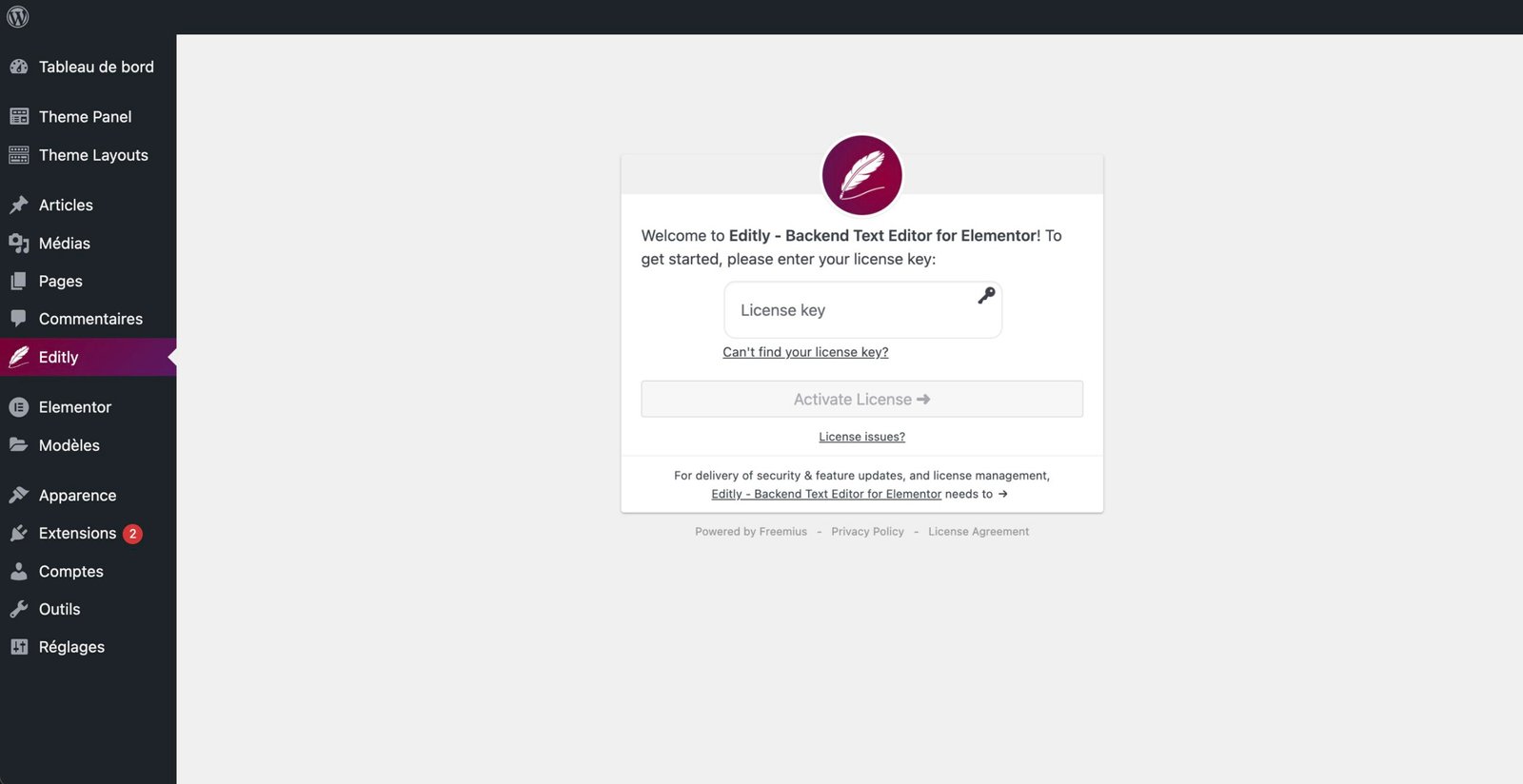
The Account Page
Located under Editly ▸ Account, this dashboard lets you:
- Check Status – Active / Expired / Inactive.
- See how many sites use the licence (multi-site keys).
- Upgrade plan, download invoices, or deactivate a domain in one click.
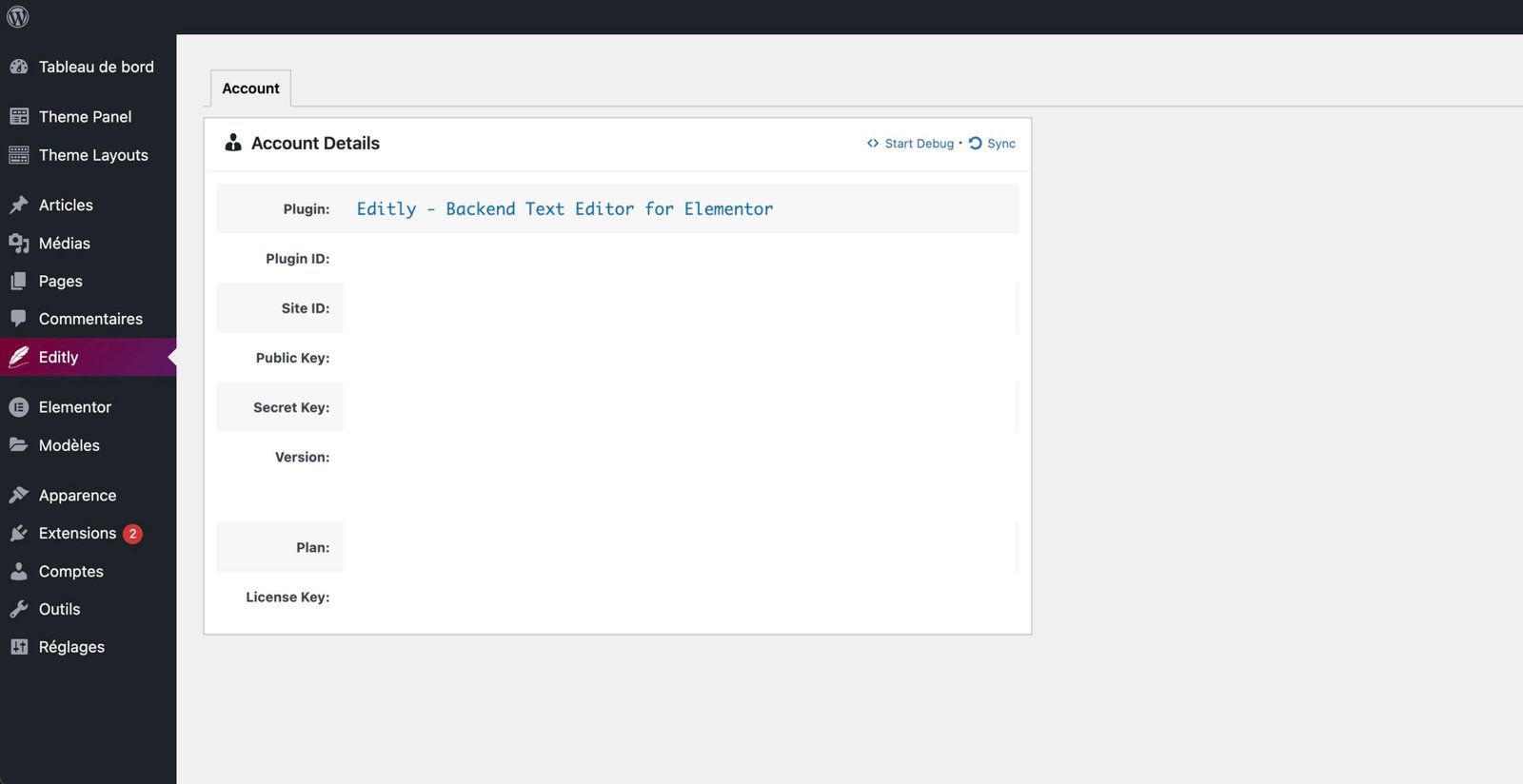
Choose a Page
Open Editly ▸ Texts; all Elementor pages are listed in the left panel. Simply click the one you want to edit.
- No search field is needed—pages are usually few and easy to scan.
- Only pages built with Elementor appear; classic WP pages or posts stay hidden.
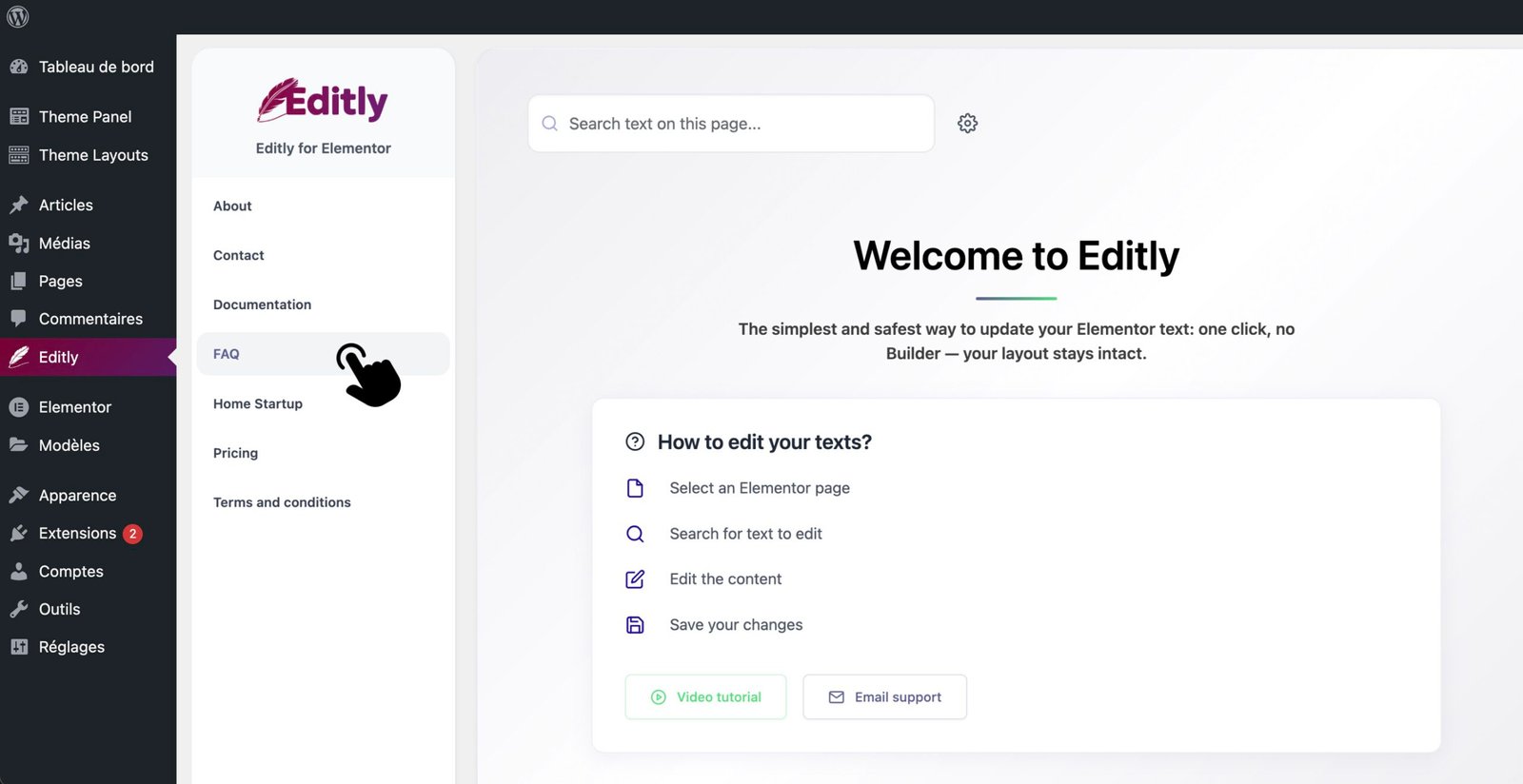
Editing Texts
When you open a page, Editly parses the Elementor JSON and lists every text node—native widgets and third-party add-ons alike.
Quick Search
A universal search bar at the top filters the list in real-time. Type any keyword to jump straight to that piece of copy—perfect for long landing pages.
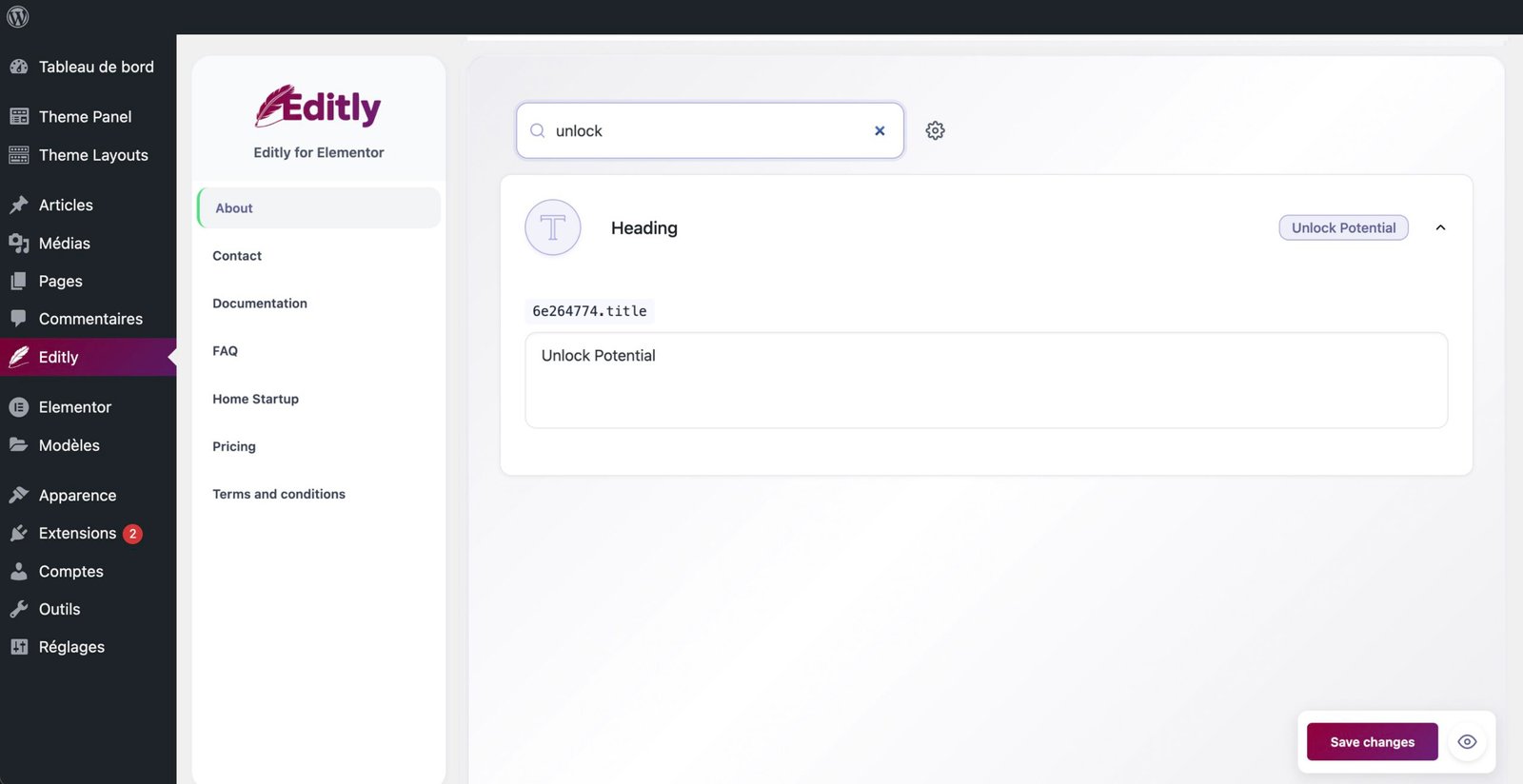
Badges & Previews
- A small badge (
2,3…) on each row tells how many editable text fields the widget contains before you expand it. - If there is only one field, the row shows a live preview of the text instead of a number.
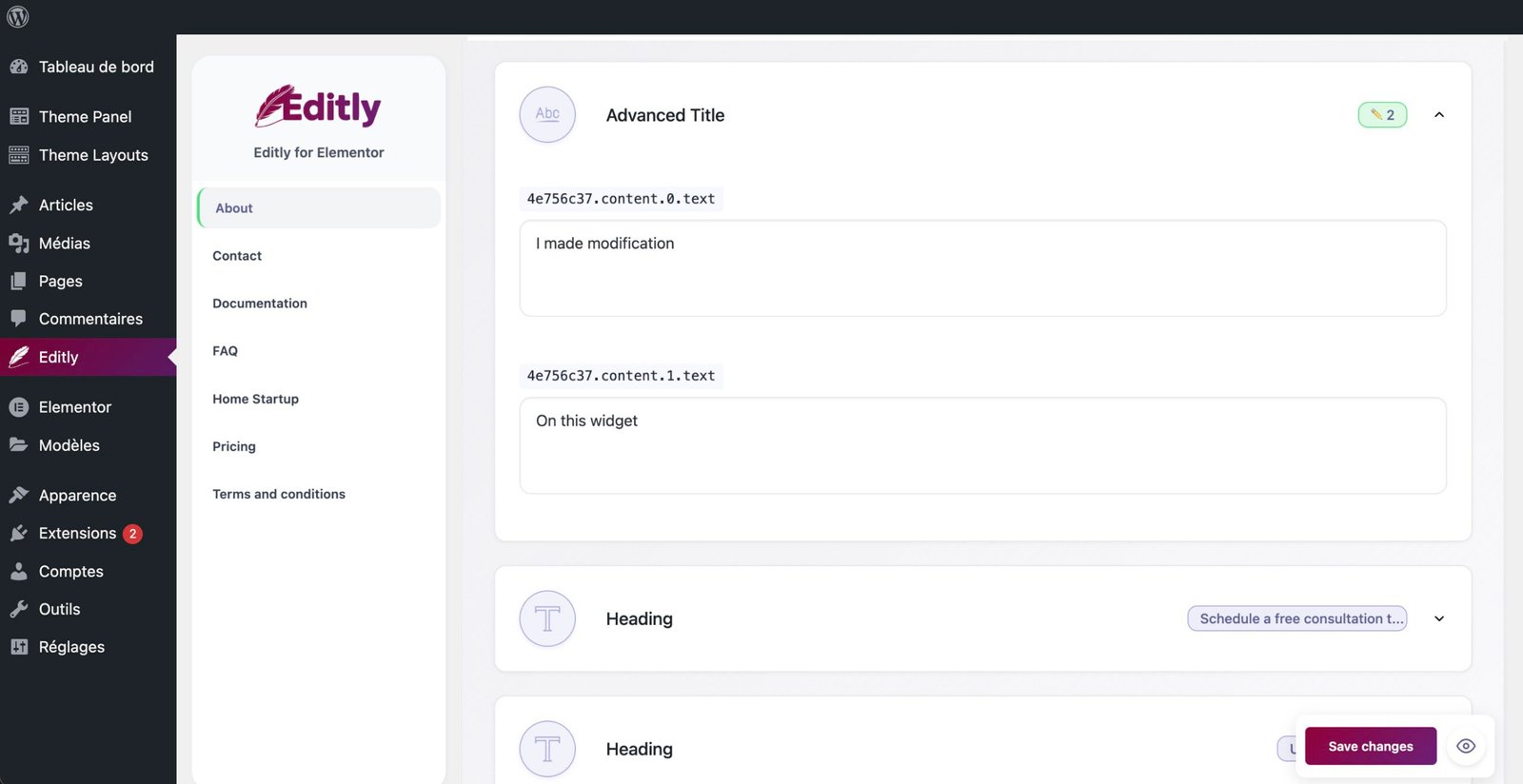
Inline Editing Flow
- Click a row – it expands and shows the text field(s) contained in that widget.
- Edit the text directly—plain textarea for simple strings, a TinyMCE toolbar for rich-text/HTML widgets (bold, lists, links …).
- Press “Save changes” (bottom right). A green notification confirms the update and states it’s already live on the front end.
- Wrappers and CSS classes are never touched—your layout remains pixel-perfect.
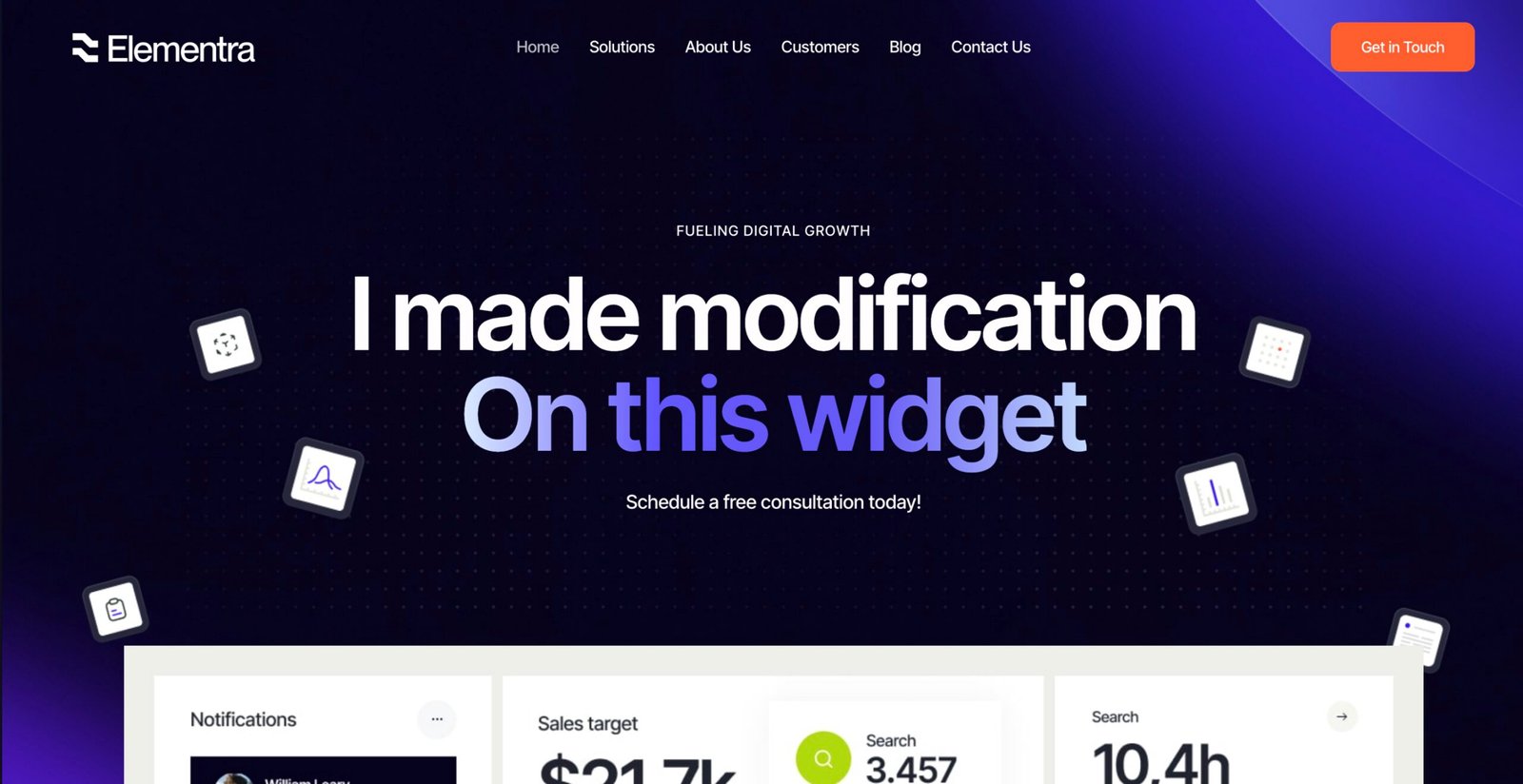
Validation & Publish
The Save changes button also launches a confirmation modal:
- Lists every modified field and shows the total number of edits.
- Confirm & Publish pushes the update; Back to Edit re-opens the form.
- Notification colours Green = success / Orange = nothing to save.
- A direct link lets you preview the updated page instantly.

Roles & Permissions
Editly adds one capability: editly_manage.
Only users who have it see the Texts screen.
Who Should Get Access?
| Role | Default Access | Typical Use |
|---|---|---|
| Administrator | ✔︎ | Site owners, agencies |
| Editor / SEO Manager | Optional | Marketing teams, content writers |
| Author, Contributor, Subscriber | ✖︎ | Not recommended |
Administrators manage permissions in Editly ▸ Settings.
A common workflow is to create a dedicated Editor user for the
client and enable editly_manage—they can change copy while
you keep full control of design.
